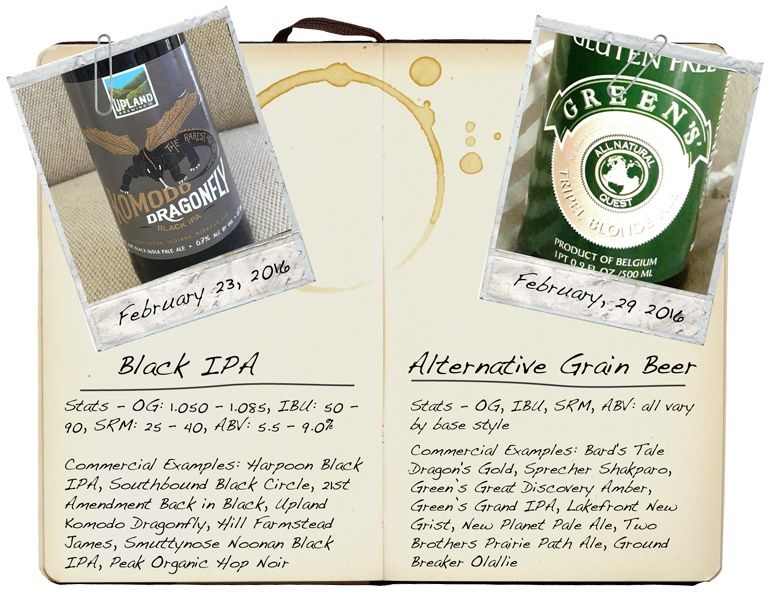Start 14-Day Trial Subscription
*No credit card required

Alternative Grain Beer and Black IPA
Black IPA
It has been widely stated (including in this very publication) that this is the “day of the IPA.” Every brewery, brewpub and bar under the sun proffers an endless array of the hopped-up, orange-amber beverage du jour. While some are better than others, the general theme of IPAs reduces them to a string of adjectives describing their flavor: citrusy, resiny, dank, sticky, hoppy, etc.
The rise of popularity in IPAs has also given strength to rampant experimentalism. In this case, Specialty IPAs (Red, Belgian, White, etc.) have risen from the “normal” hoppy creations of breweries nationwide to gain a large foothold on the marketplace. One of the more popular and more interesting variants is Black IPA.
While the term Cascadian Dark Ale is also used to refer to Black IPAs, this term originated on the West Coast, specifically in the Cascade mountain range that extends from Washington to California. The first commercially available Black IPA is credited to Stone Brewing Co. and the release of its 11th anniversary beer, Sublimely Self-Righteous Ale. Stone's Black IPA was the first beer widely produced in the style, but the brewery later admitted that it was inspired by earlier East Coast creations; notably, Shaun Hill’s (of Hill Farmstead Brewery) first foray into Black IPAs, which was in turn inspired by Greg Noonan’s 1990 creation (of Vermont Pub and Brewery), Blackwatch IPA.

Despite the muddled history of its origins, Black IPAs have a fairly standard set of ingredients. Created mostly as a middle ground between stouts and IPAs, Black IPAs should have the hop-forward qualities of the best IPAs while retaining the deep, dark brown and black colors that make stouts so enticing and mysterious. This coloration is Black IPA’s calling card and is attained through the use of roasted malts, which not only provide the color for the beer, but also serve as a foil to the style’s inherent hoppiness.
While the term Cascadian Dark Ale is also used to refer to Black IPAs, this term originated on the West Coast, specifically in the Cascade mountain range that extends from Washington to California.
It would be easy to overroast the malts during brewing, but the hallmark of a Black IPA is the restrained roastiness of the malts coupled with the ample hop profile. An analogous style is Schwarzbier, though this German classic doesn’t feature the same hop level that a Black IPA will uniformly have.
In terms of flavor, the usual tropes of IPA are prevalent, including citrusy, tropical, piney and resinous aspects combined with high bitterness, which are partially contributed to by the use of dark malts. Clean, low-intensity toffee and caramel malt characteristics highlight the de-bittered malt base, which should never be smoky or ashy and should never clash or overpower the hop highlights.
It should be noted that the ABV range for Black IPAs is vast, especially for the IPA style, ranging from 5.5 percent (the upper end of session-strength) to 9 percent (Double IPA territory). Black IPAs serve as an excellent standalone crusher, especially on the upper level of ABVs, but they also make for an excellent accompaniment to spicy barbecue ribs, fish tacos and sharp, flavorful cheeses.
STATS:
OG: 1.050 – 1.085
IBU: 50 – 90
SRM: 25 – 40
ABV: 5.5 – 9.0%
Commercial Examples: Harpoon Black IPA, Southbound Black Circle, 21st Amendment Back in Black, Upland Komodo Dragonfly, Hill Farmstead James, Smuttynose Noonan Black IPA, Peak Organic Hop Noir
Photos Courtesy of New Belgium and Harpoon.



